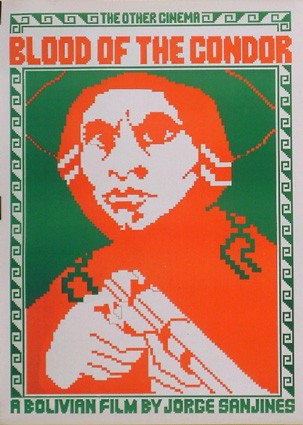Politics, celluloid and revolución
 Gael García Bernal will be speaking about "Social Change Through Documentary" at a Concordia Student Union Speaker Series event on November 22. | Photo courtesy of the Montreal International Documentary Festival
Gael García Bernal will be speaking about "Social Change Through Documentary" at a Concordia Student Union Speaker Series event on November 22. | Photo courtesy of the Montreal International Documentary Festival
He’s played the Argentine Marxist revolutionary Che Guevara (The Motorcycle Diaries), directed a short film on the Mexican Revolution (Revolución) and been an outspoken critic of the war in Iraq.
Indeed, actor-director-producer Gael García Bernal has built a wildly successful film career by attaching himself to film projects and causes that are inherently political in nature — as well as making the occasional pitch for Gillette razor blades with hip-hop star Andre 3000.
García Bernal is coming to Concordia on Friday, November 20, to give a talk for the Concordia Student Union’s Speaker Series. He will also present his latest film, the documentary Who Is Dayani Cristal?, at the 16th annual Montreal International Documentary Festival on November 23 and 24.
In anticipation of this visit, Masha Salazkina, Concordia University Research Chair in Transnational Media Arts and Culture, and Joaquin Serpe, a master’s student at the Mel Hoppenheim School of Cinema, talk about the history and impact of political cinema in Latin America.
 Elite Squad (2007), directed by José Padilha, examines police corruption and brutality in Brazil. | Image courtesy of IFC Films
Elite Squad (2007), directed by José Padilha, examines police corruption and brutality in Brazil. | Image courtesy of IFC Films
Why has Latin America proved to be such a fertile breeding ground for political cinema over the years?
Masha Salazkina: Latin American cinema has been closely connected to the struggles for national liberation, as well as resistance to U.S. imperialism.
During certain periods, films were directly participating in these struggles: this was the case with the New Latin American Cinema movement of the 1960s, which coincided with the proliferation of leftist ideology throughout the region.
At other times, such as in the Golden Age of Mexican cinema in the1940s and 1950s, Latin American cinema needed to compete with Hollywood. The popularity of domestic films depended largely on their ability to address national and local conditions, which often meant specific politically charged issues and problems.
In contrast, why do Hollywood productions tend to shy away from obvious political commentary?
M.S.: In North America and Europe, there is an assumption that art and entertainment are free from politics. I think this is a legacy from the Cold War, when North America and western Europe defined themselves against the Soviet bloc. Since artistic political engagement was enforced by communist regimes, the west defined itself by insisting that artists be free of any political or ideological concerns.
Now, after decades of this position being articulated, it’s come to the point where any overt expression of political views from a popular filmmaker or artist is seen to be in bad taste — just think about the commonly held assumption that the Oscars should be a space free of political speeches.
Joaquin Serpe: Hollywood tries to appear non-political, but their productions have always promoted the underlying theme of American dominance. whether it’s political, economic or cultural.
That said, Hollywood’s real goal is to maximize revenue and control the market, not raise political consciousness.
Does political cinema actually have an effect on politics and public policy in Latin America?
J.S.: I believe that this notion has worn out over time.
In my homeland of Argentina, movies that are supposed to carry strong political messages are basically propaganda for political parties. These films are endorsed by political parties, and simply glorify their ideology and icons. There is no intention of opening a discussion or thinking about politics in critical terms.
Nevertheless, domestic film production is being strongly encouraged, which creates the possibility that new filmmakers will explore the medium as a transformative vehicle — and that’s positive.
How are international renowned filmmakers and producers like Gael García Bernal using this status to further their causes?
M.S.: For García Bernal, I think his status as one of the most sought-after international movie stars — specifically for the kind of films that act as cross-over from “art cinema” to “popular cinema” — gives him great visibility and also the luxury of being able to choose his roles.
 Resistance to American imperialism is the theme of the Bolivian film Blood of the Condor (1969), directed by Jorge Sanjinés. | Image courtesy of Ukamau Group
Resistance to American imperialism is the theme of the Bolivian film Blood of the Condor (1969), directed by Jorge Sanjinés. | Image courtesy of Ukamau Group
As an actor and producer, he has clearly chosen to be associated as much as possible with politically conscious projects, and he has been quite outspoken about a number of political issues.
Given who García Bernal’s audience is — the young cosmopolitan international crowd — his political positions only add to his popularity, so it is hardly a commercial risk. But I do think his role as a producer who promotes Latin American cinema internationally is an important one.
Joaquin Serpe’s top 5 politically charged flicks from Latin America
No. 5: Elite Squad
Directed by José Padilha, 2007, Brazil
Watch a clip here.
No. 4: Terra em Transe
Directed by Glauber Rocha, 1967, Brazil
Watch a clip here.
No. 3: Yawar Malku (Blood of the Condor)
Directed by Jorge Sanjinés, 1969, Bolivia
Watch a clip here.
No. 2: Memorias del Subdesarrollo
Directed by Tomás Gutiérrez Alea, 1968, Cuba
Watch a clip here.
No. 1: La Hora de los Hornos (The Hour of the Furnaces)
Directed by Pino Solanas and Octavio Getino, Argentina, 1968
Watch a clip here.
Gael García Bernal’s CSU Speaker Series talk is sold out. The Montreal International Documentary Festival (RIDM) runs until November 24. For information about screenings, visit the RIDM website.